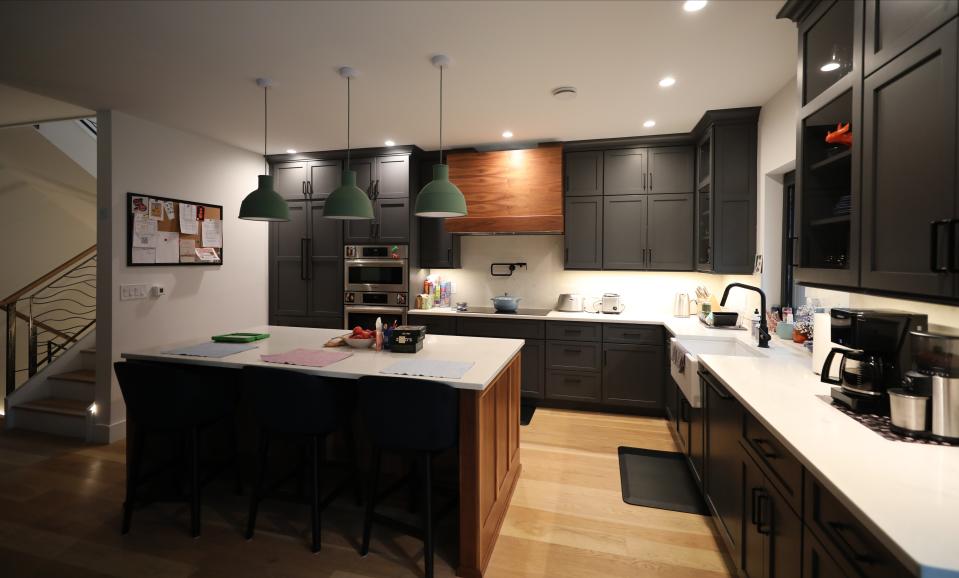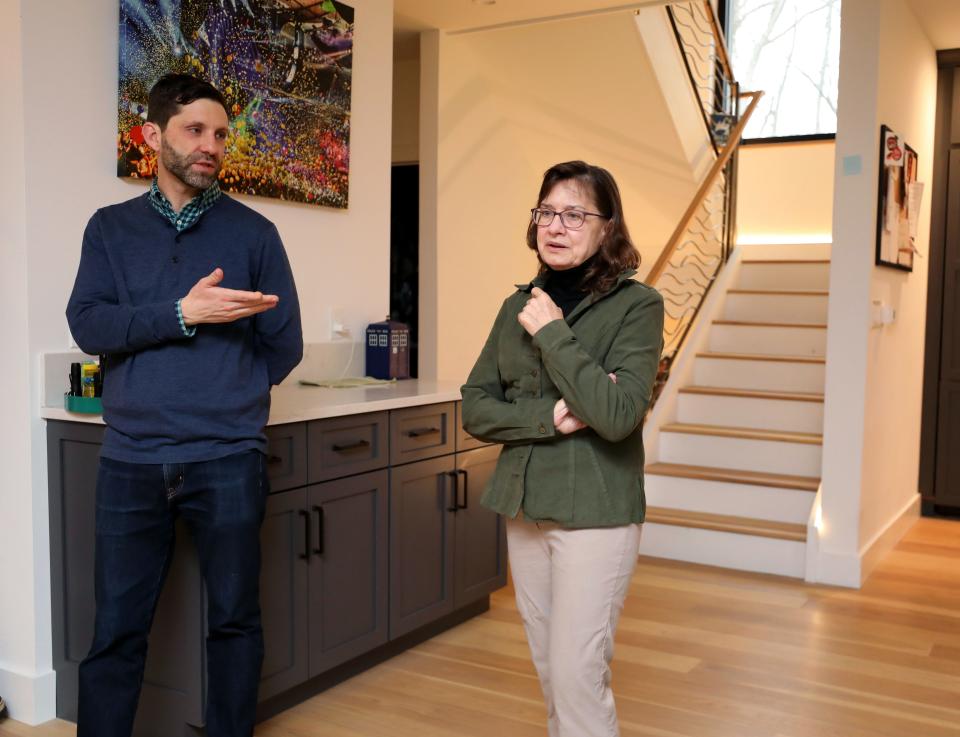Westchester's first LEED Platinum passive house will produce more energy than it consumes
OSSINING — Daniel Colombini always wanted to build a net-zero house (a home that produces more energy than it consumes), and his dream came true last summer when the Westchester native moved into the first LEED Platinum passive house in the county.
This 3,500-square-foot, three-bedroom home adjacent to the Teatown Lake Reservation was built with recycled materials and aims to be carbon-neutral.
More: What kind of house will $800K get you in Westchester, Rockland, Putnam? We checked

What is a 'passive house'?
Passive building is considered “the most energy efficient, resilient and comfortable way to build,” according to Passive House Institute US, a non-profit organization committed to making passive building the mainstream market standard. The home is among about 1,200 houses that have been certified since 2003.
Colombini said by the time the construction was completed, the passive house designs easily qualified it for LEED Platinum status, the highest certification available in the LEED green building rating system.
While the cost of construction was 8% higher than a traditional house, the additional cost is expected to be offset by energy savings within 10-15 years.
Colombini explained that the net-zero house is supported by a solar energy system that produces more energy than it consumes over a year.
“Energy-efficient and green design is vital, given the challenges of climate change,” Colombini said. “This house provides the home that my family wanted, while demonstrating that the highest standards can be attained cost-effectively.”
Story continues after gallery.
Passive house a 'landmark project' in Westchester
Building such a home had been on Colombini’s list for years, but the project didn't materialize until 2020. After he had discussed multiple plans with architect Christina Griffin, Colombini decided to tear down his old house. The foundation was retained and 75% of the materials in the old house were reused.
The new construction incorporates passive house principles including a thermal enclosure, airtightness, heat recovery, continuous balanced ventilation, glazing of windows and doors, shading and daylighting and moisture control. Colombini said the design ensures a high-quality air that even alleviates his asthma.
The landscaping was planned with the nearby Teatown Nature Preserve's environment in mind. All new plantings and landscaping on the property consist of native species, and was designed to improve storm water management and mitigate invasive species.
“The Colombini house is a landmark project in Westchester,” Griffin said. “Not only does it reach the highest standards of energy efficiency and sustainability, but it demonstrates that (this) can be attained at an additional cost that can be recouped through energy savings in about a decade.”

The energy-efficiency features not only provide ongoing energy savings, but brought about $36,100 federal and state incentives.
New York has about 400 passive houses. As the state looks to achieve climate and clean energy goals, it offers incentives for the construction of highly efficient and carbon-neutral buildings. For example, 80% of winners of a $58 million Building of Excellence competition are passive houses since 2019.
According to the state's Energy Research and Development Authority, the value of a passive house exceeds far beyond energy savings. The agency is working to build passive house-level building performance into future energy codes for new construction.
This article originally appeared on Rockland/Westchester Journal News: Westchester NY house aims to be carbon neutral, net zero in energy

